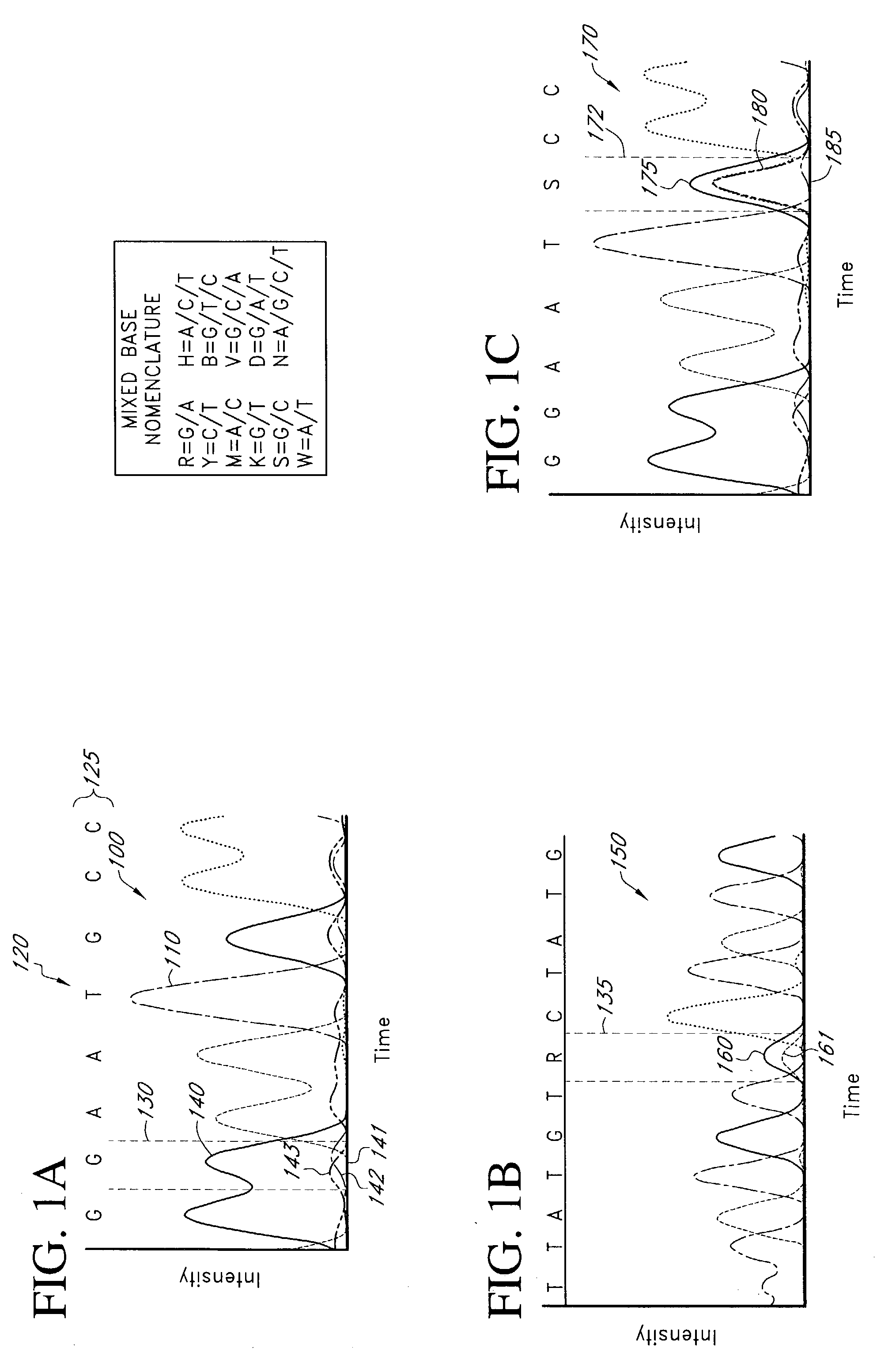Mutation detection and identification
a technology applied in the field of mutation detection and identification, can solve the problems of difficulty in identifying the presence and nature of a particular sequence variation, and problems in terms of accuracy and reliability
- Summary
- Abstract
- Description
- Claims
- Application Information
AI Technical Summary
Problems solved by technology
Method used
Image
Examples
Embodiment Construction
[0026] Reference will now be made to the drawings wherein like numerals refer to like elements throughout. As used herein, "target", "target polynucleotide", "target sequence" and "target base sequence" and the like refer to a specific polynucleotide sequence that may be subjected to any of a number of sequencing methods used to determine its composition (e.g. sequence). The target sequence may be composed of DNA, RNA, analogs thereof, or combinations thereof. The target may further be single-stranded or double-stranded. In sequencing processes, the target polynucleotide that forms a hybridization duplex with a sequencing primer may also be referred to as a "template". A template serves as a pattern for the synthesis of a complementary polynucleotide (Concise Dictionary of Biomedicine and Molecular Biology, (1996) CPL Scientific Publishing Services, CRC Press, Newbury, UK). The target sequence may be derived from any living or once living organism, including but not limited to proka...
PUM
| Property | Measurement | Unit |
|---|---|---|
| Length | aaaaa | aaaaa |
| Composition | aaaaa | aaaaa |
| Size | aaaaa | aaaaa |
Abstract
Description
Claims
Application Information
 Login to View More
Login to View More - R&D
- Intellectual Property
- Life Sciences
- Materials
- Tech Scout
- Unparalleled Data Quality
- Higher Quality Content
- 60% Fewer Hallucinations
Browse by: Latest US Patents, China's latest patents, Technical Efficacy Thesaurus, Application Domain, Technology Topic, Popular Technical Reports.
© 2025 PatSnap. All rights reserved.Legal|Privacy policy|Modern Slavery Act Transparency Statement|Sitemap|About US| Contact US: help@patsnap.com



